Grumman S-2 Tracker
The Grumman S-2 Tracker (S2F prior to 1962) was the first purpose-built, single airframe anti-submarine warfare (ASW) aircraft to enter service with the United States Navy. Designed and initially built by Grumman, the Tracker was of conventional design — propeller-driven with twin radial engines, a high wing that could be folded for storage on aircraft carriers, and tricycle undercarriage. The type was exported to a number of navies around the world. Introduced in 1952, the Tracker and its E-1 Tracer derivative saw service in the U.S. Navy until the mid-1970s, and its C-1 Trader derivative until the mid-1980s, with a few aircraft remaining in service with other air arms into the 21st century. Argentina and Brazil are the last countries to still use the Tracker.
| S-2 Tracker | |
|---|---|
 | |
| An S-2A from VS-29 | |
| Role | ASW aircraft |
| National origin | United States |
| Manufacturer | Grumman |
| First flight | 4 December 1952 |
| Introduction | February 1954 |
| Status | Active service in Argentine Naval Aviation |
| Primary users | United States Navy (historical) Royal Canadian Navy (historical) Royal Australian Navy (historical) Argentine Navy |
| Number built | 1,284[note 1] |
| Variants | Conair Firecat |
| Developed into | Grumman C-1 Trader Grumman E-1 Tracer |
Design and development
The Tracker was intended as a replacement for the Grumman AF Guardian, which was the first purpose-built aircraft system for ASW, using two airframes for two versions, one with the detection gear, and the other with the weapon systems. The Tracker combined both functions in one aircraft. Grumman's design (model G-89) was for a large high-wing monoplane with twin Wright Cyclone R-1820 nine cylinder radial engines, a yoke type arrestor hook and a crew of four. Both the two prototypes XS2F-1 and 15 production aircraft, S2F-1 were ordered at the same time, on 30 June 1950. The first flight was conducted on 4 December 1952, and production aircraft entered service with VS-26, in February 1954.
Follow-on versions included the WF Tracer and TF Trader, which became the Grumman E-1 Tracer and Grumman C-1 Trader in the tri-service designation standardization of 1962. The S-2 carried the nickname "Stoof" (S-two-F) throughout its military career; and the E-1 Tracer variant with the large overhead radome was colloquially called the "stoof with a roof.".[2]
Grumman produced 1,185 Trackers. At least 99 and possibly 100[note 1] aircraft carrying the CS2F designation were manufactured in Canada under license by de Havilland Canada. U.S.-built versions of the Tracker were sold to various nations, including Australia, Japan, Turkey and Taiwan.
Sensors and armament
The Tracker had an internal torpedo bay capable of carrying two lightweight aerial torpedoes or one nuclear depth charge.[3] There were six underwing hard points for rocket pods and conventional depth charges or up to four additional torpedoes. A ventrally-mounted retractable radome for AN/APS-38 radar and a Magnetic Anomaly Detector (MAD) AN/ASQ-8 mounted on an extendable rear mounted boom were also fitted. Early model Trackers had an Electronic Support Measures (ESM) pod mounted dorsally just aft of the front seat overhead hatches and were also fitted with a smoke particle detector or "sniffer" for detecting exhaust particles from diesel-electric submarines running on snorkel.[4] Later S-2s had the sniffer removed and had the ESM antennae moved to four rounded extensions on the wingtips. A 70-million-candlepower searchlight was mounted on the starboard wing. The engine nacelles carried JEZEBEL sonobuoys in the rear (16 in early marks, 32 in the S-2E/G). Early Trackers also carried 60 explosive charges, dispensed ventrally from the rear of the fuselage and used to create sound pulses for semi-active sonar (JULIE) with the AN/AQA-3 and later AQA-4 detection sets, whereas the introduction of active sonobuoys (pingers) and AN/AQA-7 with the S-2G conversion saw these removed. Smoke dispensers were mounted on the port ventral surface of the nacelles in groups of three each.[5][6]
Operational history
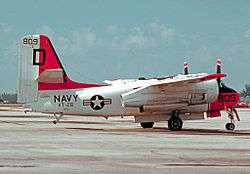
The Tracker was eventually superseded in U.S. military service by the Lockheed S-3 Viking; the last USN Tracker operational squadron (VS-37 with S-2G models) was disestablished in 1976. The last Navy S-2 was withdrawn from service on 29 August 1976.[7] For many years the TS-2A version of the Tracker was used by U.S. Navy training units, culminating with its use by Training Squadron 27 (VT-27), Training Squadron 28 (VT-28) and Training Squadron 31 (VT-31) for Student Naval Aviator training in the multi-engine pipeline with Training Air Wing FOUR (TRAWING 4) at Naval Air Station Corpus Christi, Texas.
A number of Trackers live on as firefighting aircraft while the design also continued to provide excellent service with the naval forces of other countries for years after the U.S. retired them. For example, the Royal Australian Navy continued to use Trackers as front line ASW assets until the mid-1980s.
Argentina

Argentine Naval Aviation received seven S-2As in 1962, six S-2Es in 1978, and three S-2Gs in the 1990s. They were operated from both aircraft carriers, ARA Independencia and ARA Veinticinco de Mayo, and used in the COD (US-2A conversions[8]), maritime patrol, and ASW roles. They were extensively used in the 1982 Falklands War, first from Veinticinco de Mayo, from where they detected the British task force, and then from the mainland[9] when the carrier returned to port after the sinking of the cruiser ARA General Belgrano. In the 1990s, six remaining airframes were refurbished by Israel Aerospace Industries with turboprop engines as S-2T Turbo Trackers. As of 2010, with the retirement of Argentina's only aircraft carrier, the Trackers were annually deployed on board Brazilian Navy aircraft carrier São Paulo during joint exercises ARAEX and TEMPEREX.[10] and with U.S. Navy aircraft carriers during Gringo-Gaucho maneuvers.[11]
Australia
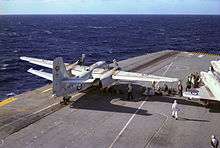
Between 1967 and 1984 the Royal Australian Navy operated two Squadrons of S-2E and S-2G variants, based at NAS Nowra (HMAS Albatross).[12] These aircraft served with the RAN's 816 Squadron, which embarked aboard the Majestic-class aircraft carrier HMAS Melbourne as part of the 21st Carrier Air Group whenever that ship was deployed; and with 851 Squadron, the S-2 training squadron.[12]
Australia initially acquired 14 S-2Es.[13] During approximately 17 years of operation of the Tracker, the RAN lost only one S-2 during aircraft operations due to an accident at sea on 10 February 1975.[12] However, on 4 December 1976, a deliberately lit fire in a hangar at Nowra destroyed or badly damaged a large proportion of the RAN's complement of Trackers.[12] Of the 14 original aircraft, one was away from Nowra undergoing maintenance at the time of the fire and three aircraft were damaged but only two of these were repaired. The destroyed aircraft were subsequently replaced with 16 ex-USN aircraft.[13][12] The replacement aircraft were all S-2Gs,[12] including the original aircraft modified by the USN to that status.[14] This saw the introduction of AQA-7 acoustic gear into RAN service and all RAN operational Trackers were subsequently modified to this standard.
Brazil
The Brazilian Air Force flew Trackers from the aircraft carrier NAeL Minas Gerais. Both the S-2A and S-2E were used (respectively as P-16A and P-16E). At the end of its service in Brazilian Air Force, one S-2T Turbo Tracker was evaluated as a possible upgrade, but due high costs the program was canceled. However, in 2010 the Brazilian Navy contracted Marsh Aviation to convert four S-2Ts[15] to Airborne Early Warning configuration and upgrade four additional Grumman C-1 Traders for tanking and carrier onboard delivery transport duties. The latter were scheduled to be back in service by 2015 and were expected to operate from the successor of Minas Gerais, NAe São Paulo.[16]. Following the bankruptcy of Marsh Aviation in 2009 the program suffered delays and the upgrade of the airframes was resumed in partnership with Elbit Systems's subsidiary, M7 Aerospace.[17] The decommissioning of the São Paulo in 2017 means that the Brazilian Navy does not have an immediate need for carrier-based tankers, transports and AEW aircraft, however the navy proceeded with procurement and the delivery of four tanker aircraft are expected by 2021.[18]
As noted under Argentina above, Trackers of that country have been flown from the São Paulo until its decommissioning in early 2017.
Canada
In 1954, de Havilland Canada entered into a contract to build Trackers under license to replace the outmoded Grumman TBM-3E Avengers being used by the Royal Canadian Navy. A total of 99[note 1] Trackers were built by de Havilland Canada, with the first Canadian-built aircraft flying on 31 May 1956. From 1957 onwards, these aircraft operated from the newly deployed aircraft carrier HMCS Bonaventure and various shore bases.[19] All the Canadian Trackers were built to the earlier "A" model airframe design with a length of 42 feet (13 m)[20] (c.f. 43 ft 6 in (13.26 m) for later model Trackers) in order to fit in Bonaventure's hangar.[21] In 1960–1961, 17 CS2F-1 aircraft, which had been relegated to training and utility duties by the CS2F-2, were transferred to the Royal Netherlands Navy. From 1964, 45 CS2F-2s were upgraded by fitting revised electronic equipment and sensors, becoming CS2F-3s. Also in 1964, a pair of CS2F-1 aircraft were stripped of armament and ASW electronics, converted to transports, and subsequently used for carrier onboard delivery.[22] The CS2F-1, -2, and -3 were redesignated as the CP-121 Mk.1, Mk. 2, and Mk. 3 respectively following the unification of Canadian forces in 1968.
After Bonaventure was decommissioned in 1970, all remaining Canadian Trackers were transferred to shore bases. This limited their usefulness for ASW patrols, and between 1974 and 1981 gradually all but 20 were placed in storage and the remainder were stripped of their ASW gear. The remaining active-duty Trackers served until 1990 on fisheries protection and maritime patrol duties. A handful of Trackers were kept in flying condition until the late 1990s but were no longer used for active service.[23][24]
A single Grumman-built S2F-1 was sold to de Havilland Canada as a pattern and test aircraft; it was assigned RCN serial number 1500 and given X-500 wing markings. This aircraft may have been dismantled by DHC and reassembled as 1501 with the same wing markings,[25] but some sources claim that 1500 was returned to the US Navy as BuNo 136519, and that 1501 was a new aircraft assembled by DHC from Grumman-provided parts, possibly with duplicate X-500 wing markings.[1] 1501 was later upgraded to CS2F-1 standards and used as a stationary instructional airframe; it was placed in storage in 1972 and was undergoing restoration at the Shearwater Aviation Museum as of June 2015.[25]
Japan
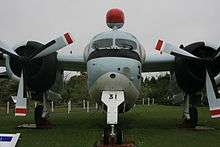
The Japan Maritime Self-Defense Force received 60 S2F-1s[26] in 1957 from U.S. stocks, and were operated until 1984. After being received, six S2F-1s were reconfigured into four S2F-U and two S2F-C variants. The S2F-1 was nicknamed Aotaka(あおたか, Blue Hawk). They were replaced by the Lockheed P-3 Orion.[27]
Netherlands
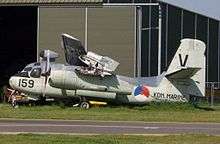
The Netherlands Naval Aviation Service (Marineluchtvaartdienst - MLD), the air arm of the Royal Netherlands Navy, received 28[28] S-2A (S2F-1) aircraft under MDAP from the US Navy in 1960. An additional 17[29] Canadian-built CS-2A (CS2F-1) aircraft formerly operated by the Royal Canadian Navy were delivered between December 1960 and September 1961 after being overhauled by Fairey Canada. These aircraft were operated from Valkenburg Naval Air Base as well as from the light aircraft carrier Karel Doorman until a fire in 1968 took that ship out of Dutch service.[30]
A total of 18 aircraft were converted to S-2N (for Netherlands) standard by Fairey Canada in 1968–1970 for ASW and MR use with 1 Sqn (at Hato International Airport), of which four were converted to US-2N trainer/transport standards in May 1971. Most of the de Havilland Canada-built CS-2As were scrapped by 1970 or used for ground instruction. The last Tracker in MLD service was withdrawn in January 1976, with some transferred to the Turkish Navy.[28]
Peru
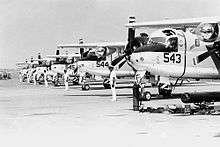
The Peruvian Navy operated with S-2E and S-2G from 1975 until 1989, they were assigned to Naval Aviation Squadron N°12 (Escuadron Aeronaval N°12). A total of 12 S-2Es were bought from the U.S. Navy in 1975 and 4 S-2G in 1983.
Taiwan
The Republic of China Air Force initially operated the S-2A in 1967. In 1976, they received S-2Es. The S-2As were later converted into target aircraft and later decommissioned in batches from 1979 to 1992. In 1986, several S-2Gs were purchased to make up for attrition. A modernization program began the same year, converting the remaining S-2E/G to a military S-2T configuration. The conversion involved the installation of two Garrett/Honeywell TPE-331-15AW turboprop engines, each rated at 1,227 kW (1,645 shp), with four-blade propellers This resulted in a payload increase of 500 kg. The upgrade also included new mission equipment of AN/AQS-92F digital sonobuoy processor, A/NARR-84 99-channel sonobuoy receiver, Litton AN/APS-504 radar, AN/ASQ-504 MAD and AN/AAS-40 FLIR.[31]
The 27 S-2Ts upgraded were transferred to the ROCN Aviation Command on 1 July 1999. In 2013, the S-2s were transferred back into ROCAF service. On May 2017, all S-2Ts were withdrawn from active service.
Turkey
The Turkish Navy received a number of ex-U.S. Navy S-2E Trackers under the MAP program and operated them from the Cengiz Topel Naval Air Base starting in the 1960s. These were later supplemented by retired S-2A (or S-2N as called by the Dutch) airframes from Netherlands. Turkish Trackers were retired in 1994 after a series of accidents caused by the advanced age and fatigue of the airframes.[32][27]
Uruguay
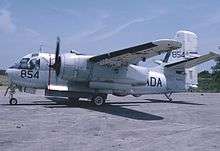
The Uruguayan Navy received the first three S-2A Trackers on 10 April 1965 at the Capitan Curbelo Navy Base. On 15 September 1982, one S-2G arrived. On 2 February 1983, another two S-2Gs arrived. By September 2004, the remaining Uruguayan Trackers were not in flight condition.[33]
Civilian use
In the late 1980s and early 1990s Conair Aviation of Abbotsford, British Columbia, Canada took possession of retired U.S. and Canadian Trackers and converted them into Firecats, with a fire retardant tank replacing the torpedo bay. The Firecats were made in two variants, a piston engine Firecat and a turboprop-powered Turbo Firecat.
In 1958, CAL FIRE, then CDF, contracted with a private air tanker service for the use of their converted World War II aircraft. By 1970 the department began to evaluate the use of former military Grumman S-2 aircraft. Over the next ten years CAL FIRE continued to build up its fleet of S-2A air tankers and in 1987, CAL FIRE began the process of converting their piston engines to turboprop. By 2005 all of CAL FIRE's airtanker fleet had been converted to S-2T air tankers.[34]
Variants

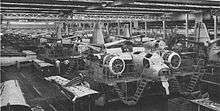
- XS2F-1
- Two prototype anti-submarine warfare aircraft powered by 1,450 hp R-1820-76WA engines.
- YS2F-1
- Designation of the first 15 production aircraft used for development, redesignated YS-2A in 1962.
- S2F-1
- Initial production variant with two 1,525 hp R-1820-82WA engines, re-designated S-2A in 1962, 740 built.
- S2F-1T
- Trainer conversion of S2F-1, redesignated TS-2A in 1962.
- S2F-1U
- Utility conversion of S2F-1, redesignated US-2A in 1962.
- S2F-1S
- S2F-1 conversion with Julie/Jezebel detection equipment, redesignated S-2B in 1962. Survivors converted to US-2B after removal of ASW gear.
- S2F-1S1
- S2F-1S fitted with updated Julie/Jezebel equipment, redesignated S-2F in 1962.
- S2F-2
- As S2F-1 with asymmetrical (port-side) extension of bomb bay, slightly enlarged tail surfaces, 77 built, most redesignated S-2C in 1962.
- S2F-2P
- Photo reconnaissance conversion of S2F-2, redesignated RS-2C in 1962.
- S2F-2U
- Utility conversion of S2F-2/S-2C, redesignated US-2C in 1962. Some were used as target tugs.
- S2F-3
- Enlarged forward fuselage, enlarged tail surfaces, additional fuel capacity, and enlarged engine nacelles bays for 32 sonobuoys, redesignated S-2D in 1962, 100 built.
- S2F-3S
- As S2F-3 but with Julie/Jezebel equipment, redesignated S-2E in 1962, 252 built.
- YS-2A
- YS2F-1 redesignated in 1962.
- S-2A
- S2F-1 redesignated in 1962.
- TS-2A
- S2F-1T training version redesignated in 1962 and 207 conversion from S-2A.
- US-2A
- S-2A converted as light transports/target tugs, 51 conversions.
- S-2B
- S2F-1S redesignated in 1962.
- US-2B
- Utility and target tug conversions of S-2A and S-2B; most S-2Bs were converted and 66 S-2As.
- S-2C
- S2F-2 redesignated in 1962.
- RS-2C
- S2F-2P photo-reconnaissance version redesignated in 1962.
- US-2C
- S2F-2U utility version redesignated in 1962.
- S-2D
- S2F-3 redesignated in 1962.
- YAS-2D/AS-2D
- Proposed self-contained night attack aircraft to be developed under Operation Shed Light; none produced.
- ES-2D
- Electronic trainer conversion of the S-2D.
- US-2S
- Utility conversion of the S-2D.
- S-2E
- S2F-3S redesignated in 1962.
- S-2F
- S2F-1S1 redesignated in 1962.
- US-2F
- Transport conversion of S-2F.

- S-2G
- S-2E conversions with updated electronics (primarily AN/AQA-7 DIFAR sonobuoy processor and AN/ARR-75 sonobuoy receiver)
- CS2F-1
- Initial production run of anti-submarine warfare aircraft for Canada based on S2F-1. A total of 42 built by De Havilland Canada.[23]
- CS2F-2
- Improved version of CS2F-1 with Litton Industries tactical navigation equipment. A total of 57 were built by De Havilland Canada.[23]
- CS2F-3
- New designation given to 43 CS2F-2 aircraft upgraded with additional electronics.
- CP-121
- New designation given to all CS2F-1, -2, and -3 aircraft following unification of Canadian military in 1968.
- Military S-2T Turbo Tracker For Argentina
- Upgraded S-2E with new engines and military equipment by IAI in the 1990s for the Argentine Navy. 6 upgraded.
- Military S-2T Turbo Tracker For Taiwan
- Upgraded S-2E/S-2G with new engines and military equipment by Grumman from 1986 to 1992 for the ROC Air Force. 27 upgraded.
- S-2T Turbo Tracker
- Civil conversion
- S-2AT
- Civil firefighter conversion with turboprop engines.
- S-2ET
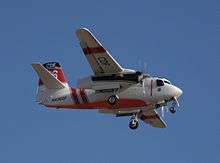
]]
- Civil conversion.
- Marsh Aviation S-2F3AT Turbo Tracker
- Turboprop conversion, powered by two Garrett TPE331 engines;[35] A total of 22 are operated by the CDF.
- Conair Firecat or Turbo Firecat
- Civil conversion as a single-seat firefighting aircraft.
- For the crew trainer/transport version based on the Tracker refer to Grumman C-1 Trader
- For the Airborne Early Warning version based on the Trader refer to Grumman E-1 Tracer
Operators
Military operators
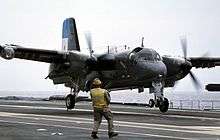
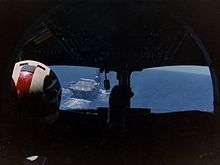

- Argentine Naval Aviation 15 ex-USN trackers[36]
.svg.png)
.svg.png)
- Royal Canadian Navy 99 - 42 CSF-1 and 57 CSF-2 (43 converted as CSF-3) (1956–1968) transferred to CF during unification as CP-121 [37]
- Canadian Forces 99 CP-121 (1968–1990)[37]

- Italian Air Force operated 45 Grumman S2F-1 Tracker delivered in 1957 and retired in 1978[38]





- Republic of China Air Force operated S-2A/E/G from 1967-1992, S-2T from 1992-2017, replaced by 12 rebuilt U.S. Navy P-3C Orions.


- Turkish Navy Aerial Wing

- United States Navy operated Trackers between 1954 and 1976.
- United States Marine Corps operated some Trackers.

- Uruguayan Navy

- Venezuelan Navy
Civil operators

Many retired Trackers were sold to private owners for fire-fighting duties. Some were rebuilt and re-engined with turboprop engines.
- Conair Group Inc. received TS-2A/Conair Firecat (G-89).
- Saskatchewan Environment received TS-2A/Conair Firecat (G-89).
- Ontario Ministry of Natural Resources 7 CS2F-1; ex-Canadian Forces and later sold to Conair[40]
- Sécurité Civile received U.S.-2A/Conair Turbo Firecat (G-89).
- KLM used ex-Dutch Navy Tracker to train its mechanics.
- California Department of Forestry & Fire Protection received S-2F3AT Turbo Tracker (G-121)
- Hemet Valley Flying Service received TS-2A(FF) Tracker (G-89)
- Marsh Aviation received S-2A(FF) Tracker (G-89)
- Sis-Q Flying Service received TS-2A Tracker (G-89/S2F-1T)
- Aero Union, in addition to being an operator, Aero Union developed the prototype S-2 tankers for the State of California in 1973.[41]
Aircraft on display
Although still in active service in South America, numbers of Trackers are on public display, mainly in countries that formerly operated the type.
Specifications (S-2F)
Data from Canada Aviation and Space Museum[24]
General characteristics
- Crew: 4
- Length: 43 ft 6 in (13.26 m)
- Wingspan: 72 ft 7 in (22.12 m)
- Height: 17 ft 6 in (5.33 m)
- Wing area: 485 sq ft (45.1 m2)
- Empty weight: 18,315 lb (8,308 kg)
- Gross weight: 23,435 lb (10,630 kg)
- Max takeoff weight: 26,147 lb (11,860 kg)
- Powerplant: 2 × Wright R-1820-82WA 9-cylinder air-cooled radial piston engines, 1,525 hp (1,137 kW) each
Performance
- Maximum speed: 243 kn (280 mph, 450 km/h) at sea level
- Cruise speed: 130 kn (150 mph, 240 km/h)
- Range: 1,173 nmi (1,350 mi, 2,172 km)
- Endurance: 9 hours endurance
- Service ceiling: 22,000 ft (6,700 m)
Armament
- 4,800 lb (2,200 kg) of payload could be carried in the internal bomb bay and on 6× under-wing hardpoints
- Torpedoes: Mk. 41, Mk. 43, Mk. 34, Mk. 44, or Mk. 46
- Depth charges: Mk. 54 or naval mines
See also
Related development
Aircraft of comparable role, configuration and era
- Grumman AF Guardian
- Fairey Gannet
- Breguet Alizé
- Lockheed S-3 Viking
Notes
- 101 Royal Canadian Navy CS2F serial numbers (1500–1600) were assigned, but it is unclear whether 1501 was an all-new test aircraft or was a new serial number given to Grumman-built S2F-1 1500 after it was dismantled and reassembled.[1] If RCN 1500 and 1501 were different aircraft, Canadian production was 100 and total production was 1,285.
References
- Walker, R.W.R. "Royal Canadian Navy – CS2F Tracker detailed list - part 1". Canadian Military Aircraft Serial Numbers. Retrieved 30 June 2015.
- O'Rourke, G.G., Captain USN. "Of Hosenoses, Stoofs, and Lefthanded Spads". United States Naval Institute Proceedings, July 1968.
- "Grumman S-2 Tracker". s2tracker.com. Archived from the original on 14 May 2011. Retrieved 19 January 2016.
- Vickridge, G.L.W., Lieutenant, RANR (September 2000). "RAN Aircraft Hoisting – Changing Techniques". Naval Historical Review. Naval Historical Society of Australia. Retrieved 1 September 2017.CS1 maint: multiple names: authors list (link)
- "Grumman C-1 Trader / S-2 Tracker". Warbird Alley. 4 December 1952. Retrieved 26 July 2013.
- "Tracker History". S2ftracker.com. 4 December 1952. Archived from the original on 19 October 2013. Retrieved 26 July 2013.
- "The Seventies." history.navy.mil. Retrieved: 15 June 2010.
- Jackson, David D. "Grumman S2F / S-2 Trackers in service with the Argentina Navy." Archived 19 October 2013 at the Wayback Machine Surviving Grumman S2F Tracker Information Repository, 2010. Retrieved: 15 June 2010.
- "Escuadrilla Aeronaval Antisubmarina." (in Spanish) Archived 14 August 2009 at the Wayback Machine institutoaeronaval.org. Retrieved: 15 June 2010.
- "Pictorial and historical data (in Spanish)." histarmar.com.ar. Retrieved: 15 June 2010.
- "S-2 video." youtube.com. Retrieved: 15 June 2010.
- Gillett 1987, p. 206.
- "Grumman S-2E/G Tracker". Royal Australian Navy. Retrieved 27 February 2010.
- Francillon 1989, p. 367.
- Resurrected US Navy Traders to serve on Brazilian aircraft carrier, www.defense-update.com, 23 December 2014
- "Brazilian Traders set for modernisation." flightglobal.com, 14 December 2011 Retrieved: 23 December 2011
- "Brazilian Navy restarts KC-2 Turbo Trader contract". Flight Global. 17 November 2014. Retrieved 10 September 2019.
- Host, Pat (4 April 2019). "LAAD 2019: Elbit Systems of America targets debut Brazil KC-2 flight". Jane's. Jane's. Retrieved 10 September 2019.
- Cummings 1988, pp. 180–182.
- Taylor 1987
- "de Haviland Grumman CP-121 Tracker." Archived 5 December 2010 at the Wayback Machine airforce.forces.gc.ca. Retrieved: 19 November 2012.
- Cummings 1988, p. 182.
- "Grumman Tracker." Shearwater Aviation Museum. Retrieved: 27 March 2008.
- Tate, Colonel D.H. "Grumman CS2F / CP-121 Tracker." Archived 31 October 2007 at the Wayback Machine Canada Aviation and Space Museum. Retrieved: 22 March 2009.
- "Grumman CS2F/CP 121 Tracker". Shearwater Aviation Museum. Retrieved 28 May 2015.
- Grumman S-2 Tracker - History Archived 14 May 2011 at the Wayback Machine Retrieved 29 August 2016
- S-2 Website : Operators in past and present Retrieved 29 August 2016
- "Netherlands Naval Aviation Service". Aeroflight.co.uk. Retrieved 26 July 2013.
- "Netherlands Naval Aviation Service". Aeroflight.co.uk. Retrieved 26 July 2013.
- "KDoorman". Steelnavy.com. Retrieved 26 July 2013.
- "Northrop Grumman S-2T Turbo Tracker." taiwanairpower.org, 19 October 2008. Retrieved: 22 September 2010.
- The Airplane Graveyard - The Complete Story Retrieved 30 August 2016
- Jackson, David D. "Uruguay Museum or Outside Display S2F / S-2 Grumman Trackers." Archived 29 October 2010 at the Wayback Machine Surviving Grumman S2F Tracker Information Repository, 2010. Retrieved: 23 August 2010.
- "Firefighting Aircraft Recognition Guide." Firefighting Aircraft (n.d.): 1. http://calfire.ca.gov/communications/downloads/fact_sheets/Aviation_Firefighting_webbooklet.pdf. Cal. Fire. Web. 8 October 2014.
- "Marsh S-2F3AT Turbo Tracker." FAA registry entry showing manufacturer, model and engine type. Retrieved: 15 June 2010.
- "Argentina S2F Trackers". S2ftracker.com. Archived from the original on 19 October 2013. Retrieved 7 January 2014.
- Jerry Proc. "Radio Research Paper - Tracker In Canadian Service". Jproc.ca. Retrieved 7 January 2014.
- "Italian Air Force Aircraft Types". aeroflight.co.uk. Retrieved 19 January 2016.
- World Air Forces – Historical Listings Thailand (THL), archived from the original on 25 January 2012, retrieved 30 August 2012
- "Grumman CS2F Tracker." Archived 1 October 2011 at the Wayback Machine Canadian Bushplane Heritage Centre, 2011. Retrieved: 10 July 2011.
- "P2V Neptune." p2vneptune.com. Retrieved: 15 June 2010.
Bibliography
- Cummings, Bill. "Thirty Years and Still Counting: Grumman Trackers in Canadian Service". Air International, Vol. 34, No. 4, April 1988. pp. 180–188.
- Francillon, René J. Grumman Aircraft since 1929. London: Putnam Aeronautical Books, 1989. ISBN 0-85177-835-6.
- Gillett, Ross. Australia's Military Aircraft. Sydney, Australia: Aerospace Publications Pty Ltd, 1987. ISBN 0-7316-0363-X.
- Hotson, Fred W. The de Havilland Canada Story. Toronto, Ontario, Canada: CANAV Books, 1983. ISBN 0-07-549483-3.
- Sullivan, Jim. S2F Tracker in Action Aircraft number 100, Carrollton, TX: Squadron/Signal Publications, 1990. ISBN 0-89747-242-X.
- Taylor, Michael, ed. Encyclopedia of Modern Military Aircraft. New York: Gallery Books, 1987. ISBN 0-8317-2808-6.
- Winchester, Jim (ed.). "Grumman S-2E/F/G/UP Tracker." Modern Military Aircraft (Aviation Factfile). Rochester, Kent, UK: Grange Books, 2004. ISBN 1-84013-640-5.
Further reading
- Núñez Padin, Jorge Felix. Núñez Padin, Jorge Felix (ed.). S-2 Tracker & Turbo Tracker. Serie Aeronaval (in Spanish). 26. Bahía Blanca, Argentina: Fuerzas Aeronavales. Archived from the original on 28 May 2015. Retrieved 10 September 2014.
External links
| Wikimedia Commons has media related to Grumman S-2 Tracker. |
